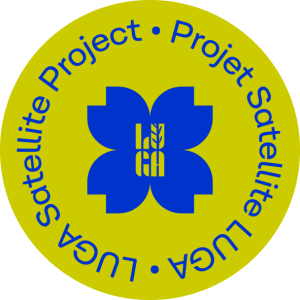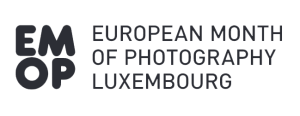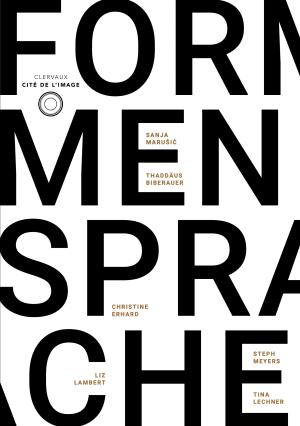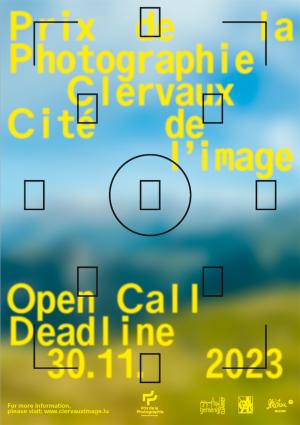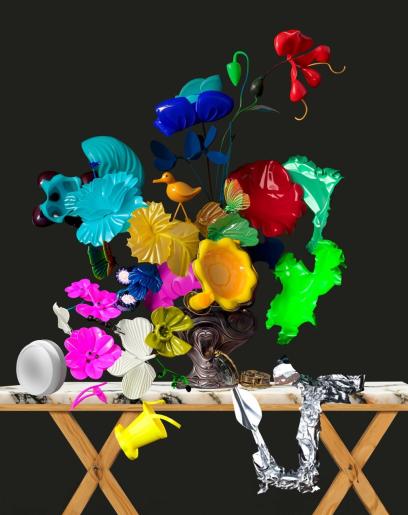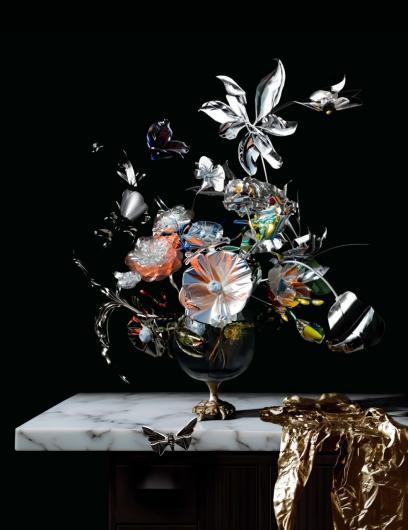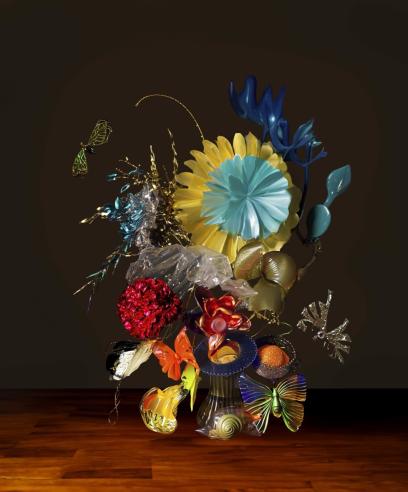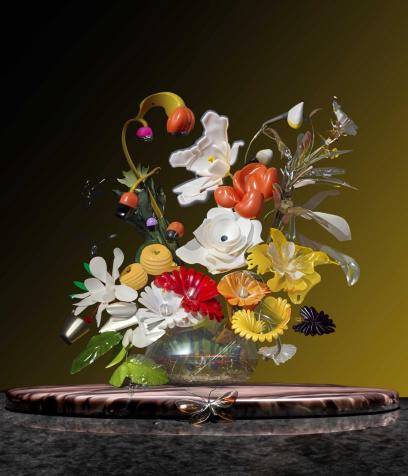Ruysch, one of the most important still life painters of the Dutch Golden Age, was known for her detailed, vibrant flower arrangements, which conveyed deeper symbolic meanings beyond pure aesthetics. Her works combined scientific accuracy with artistic virtuosity, staging nature as both magnificent and ephemeral.
Claudia Larcher draws on this tradition and brings it into the digital age. With the help of artificial intelligence and digital media, she creates futuristic still lifes that merge past and present, nature and technology, and art and consumer culture.
Like an echo from another time, the still lifes unfold against a dark background - but these are not transient roses that bloom, but blossoms made of plastic, glass and pixels. An artificial flora grows between familiar relics of our present: a cracked smartphone screen replaces the fragile glass of centuries past, a golden watch as a symbol of passing time - a sign of the accelerated present. A smiling emoji - rigid, immobile - recalls the vanitas symbols of the old masters, but its expression is mute, digitally preserved. A mechanical bee hovers above the flowers, a creature made of wires and algorithms, a reference to the complex relationships between nature and technology in times of climate change and species extinction.
The colours are vibrant, the shapes are sharply defined, each element floating on the boundary between reality and simulation. Claudia Larcher's works are not images of nature, but its digital echo - a tableau of modernity in which past and future, life and construction, beauty and transience dance together.
A special highlight of the exhibition is its interactive component: with the help of the augmented reality app Artivive, visitors can discover the ‘original’ source image by Rachel Ruysch in the digital compositions and thus experience the dialogue between baroque painting and digital art for themselves.
With the Floral Fiction exhibition, Claudia Larcher succeeds in revitalising the classic art form of the still life and impressively updating its relevance for the 21st century. The exhibition invites us to reflect on the connection between art, technology and our modern reality and to sharpen our perception of the transience - and beauty - of our digital age.
Biography
Claudia Larcher is an artist, filmmaker and AI researcher who understands photography not only as a technical medium, but also as a globally networked practice with social and political significance. Her work encompasses video animation, collage, photography and installation and focuses on the implications and experimental applications of artificial intelligence. Combining traditional and modern methods of image production, she translates digital concepts into physical spaces, exploring the materiality of the digital and the perception of reality. Her practice is rooted in a ‘phygital’ (physical and digital) perspective and redefines the boundaries between traditional and modern media forms. She investigates the interdependence of photography and artificial intelligence, the materiality of algorithmic images and the relationship between photography and ecology, thus contributing to current debates on digital humanism and automated or posthuman photography.
She lives in Vienna and has presented her work in numerous exhibitions in Austria and abroad, including Tokyo Wonder Site (Japan), Slought Foundation Philadelphia, Weimarer Kunstfest, Centre Pompidou (Paris), Ars Electronica Festival (Linz), Gray Area Festival San Francisco, Museum of Contemporary Art in Roskilde, Manifesta 13 and Anthology Film Archives in NYC. She is currently taking part in the ARTTEC programme at the AIT (Austrian Institute of Technology.
Practical information
Vernissage : 03.07.2025, 7-9 p.m.
Location : Brahaus, Montée du Château, L-9710 Clervaux
Opening hours: Fri - Tue: 11 am - 18 pm
